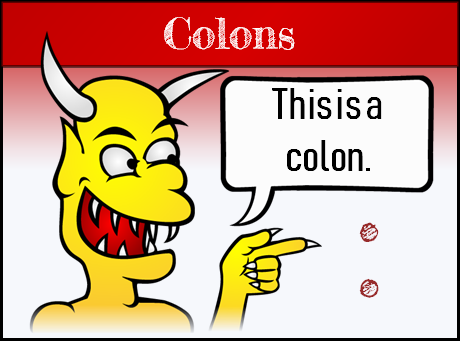
When to use a colon.
The humble colon, not to be confused with a body part, can be used as follows:
1) to introduce a list (as I have just shown above)
2) to show contrast e.g. two separate sentences which contrast with one another
The wicked are damned: the good are blessed.
3) to introduce a general idea and in the proceeding sentence explain in more detail. Think of it as a pause before introducing information.
Mae West had one golden rule for handling men: “Tell the pretty ones they’re smart and tell the smart ones they’re pretty.”
4) to introduce quoted material.
This is a favourite quotation of mine from the fabulous Terry Pratchett: “She walked quickly through the darkness with the frank stride of someone who was at least certain that the forest, on this damp and windy night, contained strange and terrible things and she was it” (Wyrd Sisters).
Tips to avoid colon abuse!
Never follow the colon by a hyphen, like so :-
There is no need to capitilise the first letter after the colon: I mean it. And I’ve just shown an example of an exemption!
If you want to get fancy
The colon can also be used to strongly emphasise something (use rarely)
There is one thing that mankind cannot live without: hope.
And if you would like some practice see the University of Bristol quiz here. Or contact me here for proofreading help.
Who is Emma?

Emma is a proofreader with 18 years of writing experience with businesses, academics and creative writers. She obtained a Creative Writing MA (St Andrews University) and a PhD in Storytelling (Warwick University). Then set up her own proofreading business and became a published author of fiction as well as academic literature such as Young People, Learning & Storytelling (Palgrave Macmillan).
0 Comments